
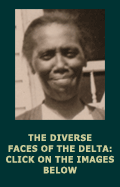

RACE:MISSISSIPPI
QUESTIONS RAISED IN THIS FILM
[click for curriculum ideas]
1. What is "race" according to those interviewed?
"Race" is a term everyone uses. These interviews demonstrate that it is used to mean a number of different things:
- Horace Harned viewed race as based on physical characteristics. He identified the five racial groups that 19th century scientists named: Caucasians, American Indians, Asians, Africans, and Australian Aborigines. He believes that these different biologically defined groups differ fundamentally from one another. He believes that each race should remain pure.
- Betty Furniss viewed race as based on cultural differences that might or might not appear as physical differences. She used a series of examples: Chinese, Japanese, people from India, blacks, all are different races.
- Aylene Quinn denied any fundamental existence of race. We are all, she said, human: "Now you know we're all different color but we're all the same, we're just as one person." She lived in a world in which white definitions of race shaped every aspect of her life, however: Although her grandfather had a white half sister, her own father had a great deal of white ancestry, and a grandmother was American Indian, Aylene Quinn was viewed in Mississippi society as Negro.
- Hoover and Freeda Lee picked out Chinese, black, white, and Jewish as important groups, but they did not use the concept of "race" to identify them.
2. Why is race important? What other forms of difference were important?
Race marked a key divide between people.It defined one major set of characteristics that admit people into one's social world and that exclude people from one?x2019;s social world. But it is not the only divide.
- Horace Harned saw property ownership as a key division. He also saw people as different religiously and culturally. Whether one was raised in the North or in the South was also important to him. His deep anti-communism made a person's political beliefs important in his judgments of others.
- Betty Furniss viewed religion as a key difference between people. She identified religion with basic values. "My mother and father didn'teven think you should date someone if they weren't a Christian, weren't a Baptist at that time," she said. "They felt like that you should stay in your own's ...religion. ... And the reason they felt that way was that somebody if you're equally yoked with, you're going to have a better marriage, a stronger marriage.You're going to have a family that's going to be stronger." Her parents would not have allowed her to date a Pentecostal, an Episcopalian, a Catholic, or a Jew, she said.
- People's appearance plays a central role in signaling and maintaining differences. Betty Furniss remarked, "the dress habit of today is very nonchalant.... A lot of it is just not Christian dress. I don't care for the way that our youth, and some adults, dress today. And they use this piercing of the ears, and the body parts, that is just kind of crude. It's not the American way."
- Alyene Quinn saw people's membership in voluntary organizations as important. After World WarII she was an active member of the McComb Voter's League, an organization that fought for the right of African Americans to vote. She joined the NAACP and, when young SNCC workers came to McComb, she worked closely with them. She identified the KKK as a key organization that terrorized the black community in the 1960s.
- Hoover and Freeda Lee identified class as important: When they married, a wealthy white woman invited them into her home for tea. The middle class whites, however, "felt that this was their land and we were just crowding them or stepping in. They didn't mind us being there, but they don't want us to step ahead of them." Religion was also important; it was leaders of white Baptist and Methodist churches who first allowed their parents to cross the color line and live, however tenuously, on the white side of the line.
3. In what areas of life do people discriminate for oragainst others?
Everyone includes and excludes others in some parts of their lives, although not necessarily in all parts of their lives. The people interviewed revealed significant differences in who they would work along side of, employ, or work under. They differed in who they would allow their children to play with. They differed in who they would live next door to. They differed in who they would invite into their home to share food at the dinner table. They were most clear in who they would marry, or approve of their children marrying.
Betty Furniss, in the 1930s, played with her black neighbors; as children they ate at each other's houses. Black and white, women and men, worked side by side in the fields. Her mother cooked for all the field hands, black and white, and they ate outside in the yard. Everyone helped each other in times of need. But churches and schools were segregated, and adult whites and blacks did not eat in each other's homes. Cross-racial sexual relationships were forbidden although, as Horace Harned said, and as Aylene's biography reveals, such relationships were quite common. Anti-miscegenation laws forbade marriage across legally-defined racial lines.
While Horace Harned was in the Legislature, or campaigning for office, he entrusted his farm to a black man, Butch Gregory, whom he considered his "closest friend." Harned's cousin said that her mother told her, "Be good to the Gregorys. They're family." She includes them as her legitimate relatives. Harned, in contrast, denies direct kinship to the Gregorys, claiming that their white ancestor was from a different branch of his family.
Alyene Quin was an independent woman who ran her own business, a restaurant in which she sold (illegal) liquor. Her closest associates were civil rights activists, both black and white. People who banded together to change the system of Jim Crow.
The Lees developed the ability to switch socially between white and Chinese for social ties in church, politics, and association. They served black people as their customers, extending credit, helping them through rough times.
Throughout everyone's lives, men associated with men and women with women in specific, known ways, and bonds of acknowledged kinship opened doors to association and obligation. Conversations with some interviewees that touched upon matters of sexual orientation were quickly
dismissed.
4. When do these inclusions and exclusions harm people?
- Some differences give one group more power than another.
- Some differences make one group's life chances better or worse than another's, regardless of individual talent or choice.
Horace Harned viewed race and property ownership as bases for excluding people from power. Among those interviewed, he had been the most powerful: He came from a long line of planters, with a large estate. His grandparents had owned slaves as part of their estate, and they fought in the Civil War to maintain these property rights. Harned's wealth and property gave him the power to buy the labor of many people. Harned was a militant segregationist, and because of that, and his family connections, he was repeatedly elected to the Mississippi State Legislature in the 1950s and 1960s. Because of his strong support for segregation, he became a member of the Legislature's leadership. He used his position to keep Mississippi's universities segregated, and to funnel funds for many new buildings to his alma mater, Mississippi State University. These policies systematically limited educational and other opportunities for Mississippi's African Americans.
As Alyene Quinn knew, some whites would use violence against her and her family to maintain white supremacy. Her life had been shaped by white definitions of race: She recalled her childhood, when she walked to school in the mud while the white children passed them in school busses. She could not enter restaurants patronized by whites through the front door. Most important to her, she was not allowed to vote.
The Chinese Americans of the Mississippi Delta used their common ethnic heritage to one another to establish groceries throughout the Delta. At the same time, they had to take great care in their relations with whites and blacks. Although the laws that created and maintained racial segregation classified them as not white, some wealthy whites treated them as white. After World War II, most white public schools accepted Chinese American students. Hoover's and Freeda's parents worked hard to see that their children conformed to white standards of behavior, so that they could have the educational and other advantages from which blacks were excluded. At the same time, their grocery stores served mostly African Americans, and they had to maintain good relations with their customers. The Lees used their ambiguous status to bridge relations between white and black, and in the process make a comfortable living.
Race, for Betty Furniss's family, conferred little privilege. They were sharecroppers, along with the black families she played and ate with. The system of segregation assured that, when her family had the opportunity to buy a farm through the Federal Government's New Deal, she would no longer associate with black people. The New Deal helped some black families buy land, as well, but in areas segregated from whites. These communities soon became strongholds for the civil rights movement, while the white communities developed a culture of white separation.
Working class neighborhoods, like the ones in which the Furniss family lived, were often the first to be affected by court ordered bussing. The affluent white neighborhoods generally, but not always, kept their local schools intact. The Furniss family, and their white neighbors, withdrew across the state line to Mississippi and organized a private school.
5. How are these systems of discrimination maintained?
The differences we found--of race, nationality, religion, gender, association, time and place--plumb people's deepest sentiments. The Confederate Flag becomes a symbol of many meanings: To some it is the distilled essence of a proud heritage of benevolent white governance. To others it evokes a legacy of "little people" fighting a powerful central government. For many it embodies an odious white supremacy and a history of chattel slavery. Horace Harned wept for an imagined past when ruling whites cared for dependent blacks; Freeda Lee and Aylene Quinn recalled with bitterness the slights visited on them by racist whites.
Horace Harned and Betty Furniss anchored their commitment to racial separation in their religious faith. "In Biblical times," Harned said, "the good Lord charged the Jewish race to be pure, and of course they didn't, and he punished them. He had His reasons and I don't question them. I believed in that, in racial purity. I surely did. And I still do." Furniss said, "My daddy and mother always said that God made all the people. Made the different races. And if He hadn't have wanted you to be separate, He would have made us all one race. And they felt like God made the races and God doesn't make a mistake. If the mistake is made, we make it by trying to undo what he has done."
For Alyene Quinn, her experience of race led to quite different beliefs. "I used to feel like that I, I just thought maybe that white people, that I just couldn't stand the sight of them. And after my house was bombed?... And you know once upon a time I'd have a butcher knife at every door so if someone tried to come in, well I'd just use that butcher knife. That was my mind." Her religious faith, based in the same Bible to which Harned and Furniss refer, was very different."After my house was bombed, I looked at how God had saved my children. And after all that I had been through. He saved us. And I said, 'Why should I hate people when God has His hand, He has a hand in those things.' And He sits high but He looks low. ... I feel like that everybody, you might be a different color, but you are the same. There shouldn't be different races. You know we're all different colors but we're all the same. We're just as one person."
6. Key dilemma of a democratic society:
Most people value being members of exclusive groups.
- Some differences cannot be chosen (sex, race, family,class origin...).
- Membership in some groups confers advantage or disadvantage BUT modern democracy assumes individuals must have similar life chances.
- How can these sorts of differences coexist with democracy?
7. What are socially responsible ways to deal with deep differences?
- In social policy?
- In the organizations you are part of?
- In your daily life?
© Jane Adams & D. Gorton 2002
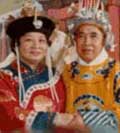 |
|
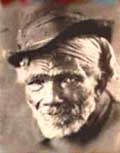 |
|
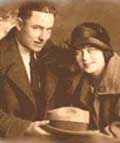 |
|
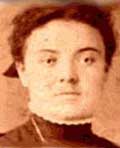 |
|
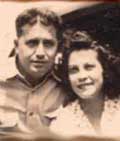 |
|
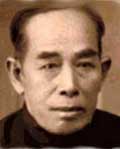 |
|
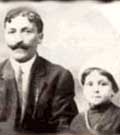 |
|
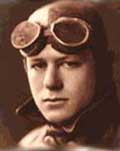 |
|
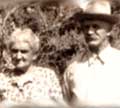 |
|
 |
|